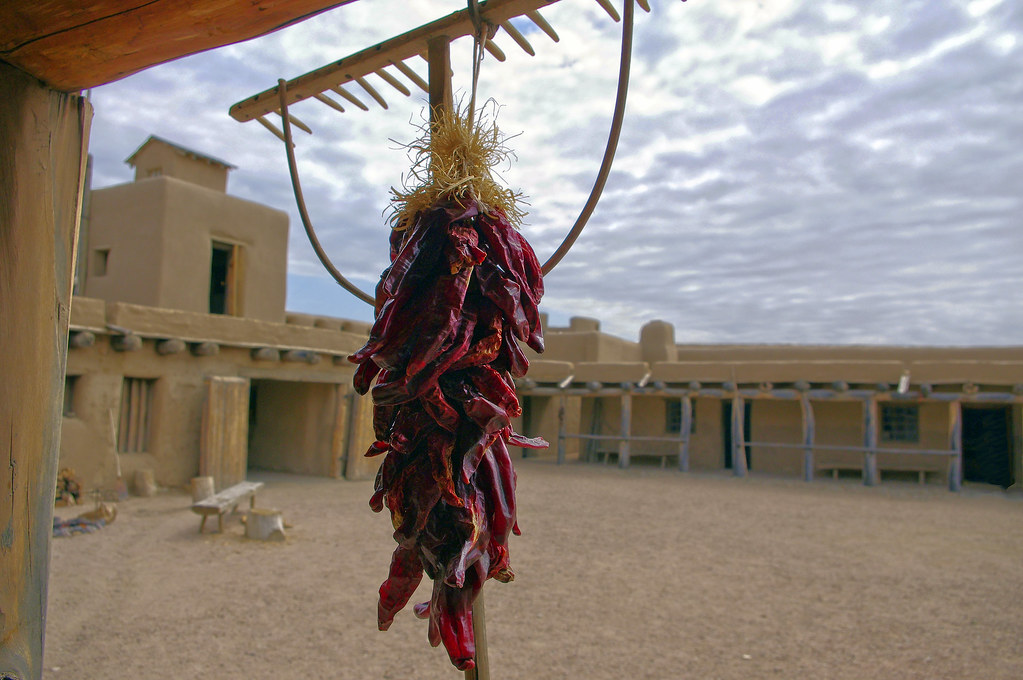Bent’s Old Fort
In 1831 or 1832 Charles Bent and St. Vrain formed a partnership, which in time became Bent, St. Vrain, and Co., and entered the Santa Fe trade. In the late 1820s or early 1830s, William Bent, who had apparently been trading independently, erected a large adobe fort on the north bank of the Arkansas River, 12 miles west of the mouth of the Purgatoire. At first named Fort William, it was also known as Bent’s Fort and finally as Bent’s Old Fort after it was partially destroyed and a new fort was built elsewhere. Elaborately constructed, it was eventually a massive adobe structure of quadrangular shape having 24 rooms lining the walls, supported by poles. Two 30-foot cylindrical bastions, equipped with cannon, flanked the southwest and northeast corners. The walls were 15 feet high and 2 feet thick and extended 4 feet above the building roofs to serve as a banquette and were pierced with loopholes. On the south side was a cattle yard, enclosed by a high wall. A self-sufficient institution, the fort was operated by about 60 persons of many nationalities and vocations, including blacksmiths, trappers and traders, carpenters, mechanics, wheelwrights, gunsmiths, cooks, cattle herders, hunters, clerks, teamsters, and laborers. (Read much more about the fort in a post from 2011.)
Ristra
A ristra is an arrangement of drying chile pepper pods, garlic bulbs, or other vegetables for later consumption. In addition to its practical use, the ristra has come to be a trademark of decorative design in the state of New Mexico as well as southern Arizona. Typically, large chiles such as New Mexico chiles and Anaheim peppers are used, although any kind of chile may be used. (Wikipedia)


